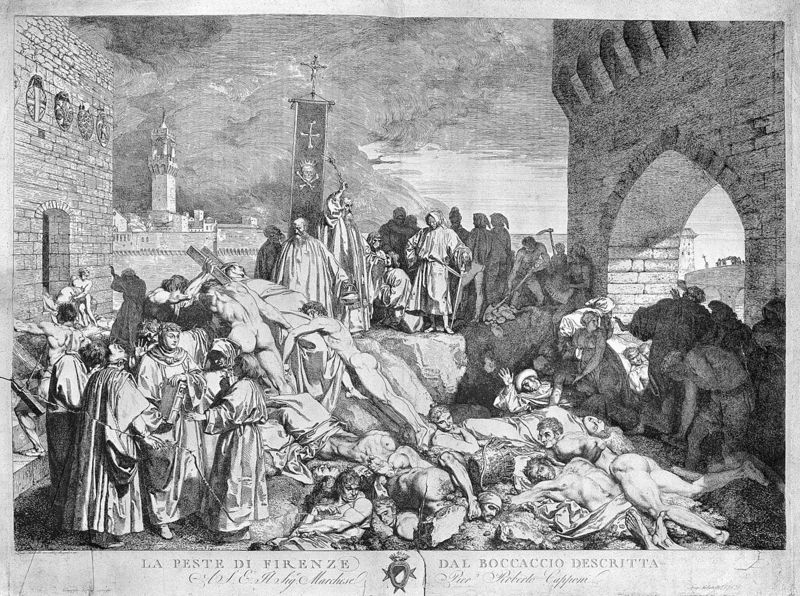An interpretation of an event described in Giovanni Boccaccio, 'Il Decameron.'
Item
Title
An interpretation of an event described in Giovanni Boccaccio, 'Il Decameron.'
Description
This etching by Luigi Sabatelli from a nineteenth-century reprint of Giovanni Boccaccio’s Il Decameron depicts the Black Death in Florence. This book, completed in 1353, is a collection of stories about the characters’ attempted escape from the Black Death epidemic in Florence (Levenstein 1996, 313-315). This etching depicts a common instance of a mass grave in the process of burial, including victims of the plague, mourners, funeral processions, and religious figures. The artist’s inclusion of several Catholic symbols throughout the etching highlights the significance of religion in funerary practice and social response to the Black Death. In Il Decameron, Boccaccio depicts the plague as lovesickness, giving the characters symptoms of passion and sexual desire, rather than depicting the harsh realities of the plague’s symptoms. The plague as lovesickness and eroticism can be seen through the dramatic physicality Sabatelli gave the subjects of his etching (314-315).
Contributor
Photographed by Wellcome Historical Medical Museum
Creator
Luigi Sabatelli
Date
1930
Format
Platemark etching
Publisher
Giuseppe Volpini
Rights
CC BY 4.0
Source
Wellcome Collection. Iconographic Collections, Wellcome Collection 10124i

